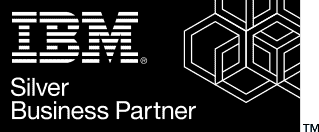A Guide to Excel Migration: Switching to a Scalable Database Solution
Excel spreadsheets are a familiar mainstay for businesses large and small. Yet, as operations expand and data volume surges, many organizations quickly realize that Excel cannot keep pace with growing demands. Let’s explore why Excel migration to more advanced data solutions is essential, how to do it effectively, and how i3solutions can support you every step of the way.
The Limitations of Using Excel for Business Operations
Excel may be convenient for small projects and basic tasks, but it comes up short when companies need robust data management. Large-scale operations quickly outgrow Excel’s row and column limits, leading to slowdowns, version control headaches, and an increased risk of errors. Without advanced security features, sensitive information remains exposed, and real-time collaboration is limited to clunky file-sharing methods. In the era of Digital Transformation, businesses need more streamlined solutions to handle greater data complexity, enhance efficiency, and strengthen collaboration. For organizations at scale, upgrading from Excel becomes a strategic imperative to remain competitive.
The Best Excel Alternatives for Storing and Managing Data
Organizations seeking to elevate their data management beyond Excel have several powerful platforms to consider:
- SQL Databases: Provide robust performance, scalability, and advanced querying capabilities for large datasets.
- Power Apps: Enable rapid app creation without heavy coding, streamlining workflows and boosting productivity.
- SharePoint: Offers collaboration features, document management, and integration with other Microsoft 365 services.
- Azure: Deliver on-demand scalability, top-tier security, and reduced infrastructure overhead.
- NoSQL Databases: Cater to unstructured data needs, offering flexibility for real-time analytics and big data use cases.
These alternatives offer more adaptability and sophisticated data handling compared to Excel. Selecting the right solution depends on your business requirements, data volume, and desired level of collaboration.
The Benefits of Migrating to a Scalable Database Solution
Excel migration can feel daunting, but transitioning to a more advanced system has numerous advantages for both technical teams and broader business operations. Below are some of the main benefits.
- Improved Scalability: Manage larger datasets without running into row limits, sluggish performance, or frequent crashes.
- Centralized Data Storage: Keep information organized and accessible in one location, reducing file chaos and version inconsistencies.
- Real-Time Collaboration: Allow multiple users to access, edit, and analyze data simultaneously without clashing file versions.
- Advanced Security Controls: Implement granular access permissions, audit trails, and encryption methods not available in Excel.
- Enhanced Business Intelligence: Gain deeper insights through robust reporting tools, dashboards, and data analytics features.
- Greater Efficiency: Automate repetitive tasks and workflows, freeing employees to focus on strategic, value-adding work.
By consolidating data into a scalable database solution, you free your teams from Excel’s constraints and enable improved efficiency, robust data governance, and stronger business intelligence.
A Step-by-Step Guide on Excel Migration
Migrating from Excel to a more powerful, scalable data management platform can feel overwhelming. However, with the right strategy, you can minimize disruptions and accelerate your path to digital transformation. At i3solutions, we’ve developed a tried-and-true framework for ensuring successful transitions.
Step 1: Assess Your Data Requirements
Before beginning an Excel migration, determine your current and future data needs. How many records do you manage daily? What level of security do you require? Understanding the complexity and volume of your data helps shape the choice of platform—whether it’s an SQL database, a SharePoint environment, or a cloud service.
Step 2: Identify the Right Platform
Every organization has different requirements. Some value Microsoft ecosystem integration above all else, while others prioritize scalability or big data capabilities. At i3solutions, we help you evaluate multiple options—such as SQL Server, Power Apps, or Azure-based solutions—to find the one that best aligns with your business objectives. This is also the stage to confirm licensing costs, security protocols, and potential integration challenges.
Step 3: Prepare and Cleanse Your Data
One of the biggest mistakes companies make is migrating “dirty data”—inaccurate, duplicate, or outdated information. Conduct a thorough data audit to identify inconsistencies and validate data accuracy. Proper data cleansing ensures that the new system won’t inherit old issues. Labeling data with consistent naming conventions, removing duplicates, and standardizing formats will drastically enhance usability in the new platform.
Step 4: Map Your Fields and Tables
When switching from Excel’s columns and rows to a database’s tables and relationships, you’ll need to map your data structures carefully. Create a blueprint detailing how each Excel column translates to a table field. This step is critical for maintaining data integrity—mismatched or improperly defined fields can lead to errors and confusion down the line.
Step 5: Conduct a Pilot Excel Migration
Rather than moving all your data at once, consider running a pilot or partial migration. This approach allows you to identify potential pitfalls, test performance, and gather feedback from end-users without risking your entire dataset. At i3solutions, we typically recommend a phased rollout for larger migrations, helping minimize disruptions to daily operations.
Step 6: Implement Automation and Workflows
One of the main benefits of advanced data platforms is the ability to automate repetitive tasks. After verifying that your data migration is successful, explore options for workflow automation. This might include setting up triggers for data entry, configuring alerts for certain metrics, or integrating with other business applications for a seamless data flow.
Step 7: Train Your Users
Switching from Excel to a new system can be a big change for team members who are used to certain formulas and macros. Offer training sessions, tutorials, and hands-on demonstrations to help them adapt. User adoption is vital to migration success—if employees don’t understand or trust the new platform, they’ll find ways to revert to familiar habits.
Step 8: Monitor and Optimize
Keep a close watch on system performance, user feedback, and any emerging errors. Database environments often require ongoing maintenance, such as indexing tables and updating queries. i3solutions advises setting up regular performance check-ups and user feedback loops to ensure you’re leveraging your new solution effectively. Over time, you may want to add more advanced features, like analytics dashboards or predictive modeling.
Ensure a smooth transition from Excel to a scalable data solution with i3solutions’ expert data migration solutions, designed for efficiency and accuracy.
Tips for a Successful Excel Migration
Even a well-planned project can face hiccups without the right guidance. Drawing on years of experience, i3solutions has compiled best practices to help your migration run smoothly.
- Set Clear Goals: Define success, whether it’s faster queries, enhanced security, or better collaboration.
- Engage Stakeholders Early: Keep key team members and decision-makers informed, especially those who rely on spreadsheets daily.
- Prioritize Data Quality: Clean, accurate data is foundational for any effective database.
- Consider Phased Rollouts: Moving smaller batches of data first reduces the impact on day-to-day operations if issues arise.
- Plan for Possible Downtime: Schedule migrations during off-peak hours to mitigate interruptions to business.
- Secure Your New Environment: Enable necessary security features, including role-based access and encryption, from the start.
Following these considerations sets the stage for a smooth transition. Approaching the migration process methodically can maximize your new solution’s ROI and minimize disruptions.
Ensure a Seamless Excel Migration with i3solutions
Transitioning away from Excel to a scalable database solution doesn’t have to be an ordeal. With the right plan, tools, and partner, you can enhance data integrity, collaboration, and insights across your organization. i3solutions offers tailored Excel migration services that cover every phase of the process—from initial platform selection to final user training.
Our experts draw on deep experience to ensure your new environment is both powerful and flexible, paving the way for future growth. If you’re ready to make the leap to a modern data solution, reach out to i3solutions and discover how we can guide you to a more robust, efficient, and secure data management strategy.












